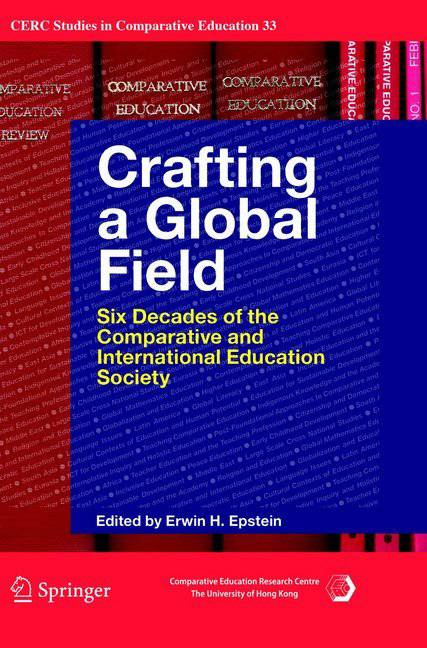
Je cadeautjes zeker op tijd in huis hebben voor de feestdagen? Kom langs in onze winkels en vind het perfecte geschenk!
- Afhalen na 1 uur in een winkel met voorraad
- Gratis thuislevering in België vanaf € 30
- Ruim aanbod met 7 miljoen producten
Je cadeautjes zeker op tijd in huis hebben voor de feestdagen? Kom langs in onze winkels en vind het perfecte geschenk!
- Afhalen na 1 uur in een winkel met voorraad
- Gratis thuislevering in België vanaf € 30
- Ruim aanbod met 7 miljoen producten
Zoeken
Crafting a Global Field
Six Decades of the Comparative and International Education Society
€ 167,95
+ 335 punten
Omschrijving
The Comparative and International Education Society (CIES) is the oldest and largest body of its kind, and is a leader among the 44 members of the World Council of Comparative Education Societies (WCCES). This book celebrates the CIES' 60th anniversary.
The Society grew out of a series of conferences in the mid-1950s. Those conferences were attended by a small group of scholars in the USA who were keen to elucidate and expand their field. Now the Society has over 2,500 individual and about 900 institutional members (mainly libraries) around the world.
The book explains how the Society was constructed and internationalized. It analyzes its development trajectory, its major structural components, and the programs and curricula that it has inspired and nourished. The significance of the book is not restricted to the CIES. It will certainly interest counterparts in other WCCES constituent societies and scholars from all fields who are concerned with institutional structures and their evolution.
The Society grew out of a series of conferences in the mid-1950s. Those conferences were attended by a small group of scholars in the USA who were keen to elucidate and expand their field. Now the Society has over 2,500 individual and about 900 institutional members (mainly libraries) around the world.
The book explains how the Society was constructed and internationalized. It analyzes its development trajectory, its major structural components, and the programs and curricula that it has inspired and nourished. The significance of the book is not restricted to the CIES. It will certainly interest counterparts in other WCCES constituent societies and scholars from all fields who are concerned with institutional structures and their evolution.
Specificaties
Betrokkenen
- Uitgeverij:
Inhoud
- Aantal bladzijden:
- 316
- Taal:
- Engels
- Reeks:
- Reeksnummer:
- nr. 33
Eigenschappen
- Productcode (EAN):
- 9783319814483
- Verschijningsdatum:
- 30/05/2018
- Uitvoering:
- Paperback
- Formaat:
- Trade paperback (VS)
- Afmetingen:
- 156 mm x 234 mm
- Gewicht:
- 471 g

Alleen bij Standaard Boekhandel
+ 335 punten op je klantenkaart van Standaard Boekhandel
Beoordelingen
We publiceren alleen reviews die voldoen aan de voorwaarden voor reviews. Bekijk onze voorwaarden voor reviews.








